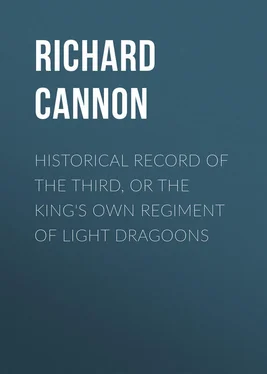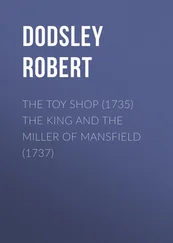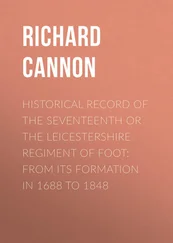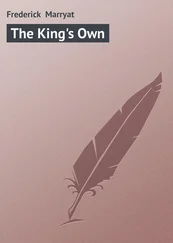Richard Cannon - Historical Record of the Third, Or the King's Own Regiment of Light Dragoons
Здесь есть возможность читать онлайн «Richard Cannon - Historical Record of the Third, Or the King's Own Regiment of Light Dragoons» — ознакомительный отрывок электронной книги совершенно бесплатно, а после прочтения отрывка купить полную версию. В некоторых случаях можно слушать аудио, скачать через торрент в формате fb2 и присутствует краткое содержание. Издательство: Иностранный паблик, Жанр: foreign_antique, foreign_prose, на английском языке. Описание произведения, (предисловие) а так же отзывы посетителей доступны на портале библиотеки ЛибКат.
- Название:Historical Record of the Third, Or the King's Own Regiment of Light Dragoons
- Автор:
- Издательство:Иностранный паблик
- Жанр:
- Год:неизвестен
- ISBN:нет данных
- Рейтинг книги:3 / 5. Голосов: 1
-
Избранное:Добавить в избранное
- Отзывы:
-
Ваша оценка:
- 60
- 1
- 2
- 3
- 4
- 5
Historical Record of the Third, Or the King's Own Regiment of Light Dragoons: краткое содержание, описание и аннотация
Предлагаем к чтению аннотацию, описание, краткое содержание или предисловие (зависит от того, что написал сам автор книги «Historical Record of the Third, Or the King's Own Regiment of Light Dragoons»). Если вы не нашли необходимую информацию о книге — напишите в комментариях, мы постараемся отыскать её.
Historical Record of the Third, Or the King's Own Regiment of Light Dragoons — читать онлайн ознакомительный отрывок
Ниже представлен текст книги, разбитый по страницам. Система сохранения места последней прочитанной страницы, позволяет с удобством читать онлайн бесплатно книгу «Historical Record of the Third, Or the King's Own Regiment of Light Dragoons», без необходимости каждый раз заново искать на чём Вы остановились. Поставьте закладку, и сможете в любой момент перейти на страницу, на которой закончили чтение.
Интервал:
Закладка:
War with France commenced in 1793, and was followed by augmentations to the Army. It was not found necessary to add a single Heavy Cavalry Regiment; but the following Regiments of
Twenty-first, – by Lieut. – Colonel Thomas R. Beaumont. This regiment served at the Cape of Good Hope and in India thirteen years; a detachment was sent to do duty at St. Helena, when Napoleon Buonaparte was removed thither. This regiment was disbanded at Chatham in 1820.
Twenty-second, – by Major-General William Viscount Fielding; – served in Great Britain and Ireland; – disbanded in 1802.
Twenty-third, – by Colonel William Fullerton; – served in Great Britain and Ireland; – disbanded in 1802.
Twenty-fourth, – by Colonel William Loftus; – served in Great Britain and Ireland; – disbanded in 1802.
Twenty-fifth, – by Major-General Francis Edward Gwyn. This regiment was numbered the Twenty-second after the Treaty of Amiens in 1802. It served with reputation in India; was employed at the reduction of Java; signalized itself on several occasions; and was rewarded with the royal authority to bear the word Seringapatam on its guidons and appointments. It was disbanded in England in 1820.
Twenty-sixth, – by Lieut. – General R. Manners; – numbered the Twenty-third in 1803. This regiment served in Egypt, Portugal, Spain, Flanders, and France; and its distinguished conduct was rewarded with the honour of bearing on its guidons and appointments, the Sphinx , with the words Egypt , Peninsula , and Waterloo . In 1816 it was constituted a corps of Lancers. It was disbanded in England in 1817.
Twenty-seventh, – by Major-General Wynter Blathwayte; – numbered the Twenty-fourth in 1804. This regiment served in India, distinguished itself at the battles of Ghur and Delhi, and was permitted to bear the Elephant , with the word Hindoostan , on its guidons and appointments. It was disbanded in England, on its arrival from Bengal, in 1819.
Twenty-eighth, – by Major-General Robert Lawrie; – served in Great Britain, Ireland, and at the Cape of Good Hope; – disbanded in Ireland in 1802.
Twenty-ninth, – by Major-General Francis Augustus Lord Heathfield; – numbered the Twenty-fifth in 1804. This regiment served in India, and was at the reduction of the Isle of France. It was disbanded at Chatham, on its arrival from India, in 1819.
Raised in 1794.
Thirtieth, – by Lieut. – Colonel J. C. Carden; – disbanded in 1796.
Thirty-first, – by Lieut. – Colonel William St. Ledger; – disbanded in 1796.
Thirty-second, – by Lieut. – Colonel H. J. Blake; – disbanded in 1796.
Thirty-third, – by Lieut. – Colonel J. Blackwood; – disbanded in 1796.
Soon after the re-commencement of hostilities with France in 1803, the Seventh, Tenth, Fifteenth, and Eighteenth Light Dragoons were equipped as Hussars. Since the termination of the war in 1815, the Third and Fourth Dragoons have been changed from heavy to light ; the Ninth, Twelfth, Sixteenth, and Seventeenth Light Dragoons have been constituted Lancers; and the Eighth and Eleventh Light Dragoons have also been equipped as Hussars.
At this period (1847), the Cavalry of the British Army consists of twenty-six regiments – thirteen Heavy and thirteen Light; and is composed of three regiments of Cuirassiers, ten of Heavy Dragoons, four of Light Dragoons, five of Hussars, and four of Lancers.
HISTORICAL RECORD OF THE THIRD, OR THE KING'S OWN, REGIMENT OF LIGHT DRAGOONS
1685
James the Second ascended the throne of England on the 6th of February, 1685, and four months only had elapsed, when his nephew, James Duke of Monmouth, erected the standard of rebellion on the western coast, and, having been joined by upwards of three thousand men, proclaimed himself king. To oppose Monmouth and his rash adherents, the King obtained from Parliament a grant of four hundred thousand pounds, and augmented the strength of his army. Among the loyal yeomen and artisans who arrayed themselves under the banners of their sovereign, a number of young men from Berkshire, Middlesex, Herts, and Essex, were formed into five independent troops of Dragoons under Captains Richard Leveson, John Williams, Thomas Hussey, Edward Lea, and Francis Russel. These five troops, with an old independent troop of Dragoons, commanded by Colonel Strather, were attached to the Royal Dragoons under John Lord Churchill, (afterwards the great Duke of Marlborough,) whose regiment was thus augmented to nine hundred men, and from these additional troops the corps which now bears the distinguished title of the "Third, or King's Own Regiment of Light Dragoons," derives its origin.
Captain Russel's troop rendezvoused at Chelsea and Knightsbridge, and having been speedily mounted and equipped, it was attached to the three Scots regiments of foot which had arrived from Holland, and ordered to join the army; but the insurgent bands having been overthrown at Sedgemoor on the 6th of July, it halted at Bagshot; and proceeding to London on the 13th, was present at the execution of the Duke of Monmouth on the 15th of that month.
Although the insurrection was thus speedily suppressed, and the executions which followed were sufficiently numerous to intimidate the disaffected, and prevent a second appeal to arms of a similar character, yet the King resolved to retain a considerable number of the newly-raised forces in his service. On the 17th of July several troops of Dragoons were formed into a regiment, (now the fourth light dragoons,) under the command of Colonel John Berkeley; and in the beginning of August, four of the additional troops attached to the royal dragoons, with one troop from Berkeley's regiment, were incorporated; at the same time another troop was ordered to be raised, and the six were constituted a regiment of which His Grace the Duke of Somerset was appointed Colonel, and Alexander Cannon, from a regiment of foot in the Dutch service, Lieutenant-Colonel, by commission dated the 2nd of August, 1685. The regiment thus formed is the subject of this memoir; its Colonel being Lord-Lieutenant of Somersetshire, had commanded the militia of that county during the rebellion, and his regiment was honoured with the title of the "Queen Consort's Regiment of Dragoons;" and being composed of troops raised previously to those of Berkeley's regiment, it obtained precedence of the last-mentioned corps 10 10 The Third, ranked as Second Dragoons; the Fourth as Third; and the Second as Fourth; until the peace of Utrecht, when the claim of the Greys to precedence was submitted to a board of general officers and admitted. — See the Historical Record of the Scots Greys.
.
1686
The establishment was fixed by warrant under the sign manual, bearing date the 1st of January, 1686, from which the following is an extract.
Читать дальшеИнтервал:
Закладка:
Похожие книги на «Historical Record of the Third, Or the King's Own Regiment of Light Dragoons»
Представляем Вашему вниманию похожие книги на «Historical Record of the Third, Or the King's Own Regiment of Light Dragoons» списком для выбора. Мы отобрали схожую по названию и смыслу литературу в надежде предоставить читателям больше вариантов отыскать новые, интересные, ещё непрочитанные произведения.
Обсуждение, отзывы о книге «Historical Record of the Third, Or the King's Own Regiment of Light Dragoons» и просто собственные мнения читателей. Оставьте ваши комментарии, напишите, что Вы думаете о произведении, его смысле или главных героях. Укажите что конкретно понравилось, а что нет, и почему Вы так считаете.












